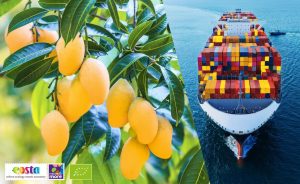Last season, Peru exported approximately 280 million kilos of mangoes. This season, we expect to export around 240 million kilos, with the United States and Europe taking in 90% of the shipments. While Ecuador is reaching its harvest peak and Brazil is finishing its harvest, Peru is gradually beginning with smaller volumes, mainly of Ataulfo, Edward, and Kent varieties, which will increase from weeks 48-49,” he added.
“The markets remain stable, but we are working to consolidate destinations in Asia, especially South Korea, Japan, and China, and strengthen our presence in Latin America, with Chile as a key market due to its logistical proximity,” Vílchez indicated. Currently, Peruvian mangoes are exported to more than 35 countries. The United States, the Netherlands, and Spain are its main destinations.
In Piura, Lambayeque, and Casma, water resources are partially recovering. APEM urges better water planning and bloom management to prevent crop concentration and price pressure. “The key is to distribute production peaks and work with climate advisors to optimize harvests,” he added.
The logistics sector has gained insights from past challenges. “This year, companies improved their shipment coordination, and ports like Paita have implemented specific strategies to minimize bottlenecks. Moreover, the reduced overlap of harvest periods for products like grapes and blueberries may help streamline transit and shipping times,” he noted.
RELATED NEWS: Peruvian blueberry season to end shorter than expected, with lower export volumes
Regarding prices, the outlook is positive. “The lower flowering and improved calibers should lead to higher prices. We need this for the industry,” said Vílchez, though he cautioned that external factors like supply from Mexico, Brazil, and Ecuador will affect market balance.
While 80% of Peruvian mangoes are still exported as fresh fruit, APEM is encouraging the development of frozen, dehydrated, and processed products. This strategy aims to maximize the use of fruit that cannot be exported fresh and to increase local employment opportunities.
Lastly, Vílchez emphasized the significance of the recent 24th International Mango Congress, which coincided with APEM’s 25th anniversary, as a key forum for addressing climate challenges and advancing technological innovations in the industry. “The goal is to make sure that Peruvian mango, the nation’s leading product, attains genuine sustainability and maintains a strong presence in global markets,” he stated.





















